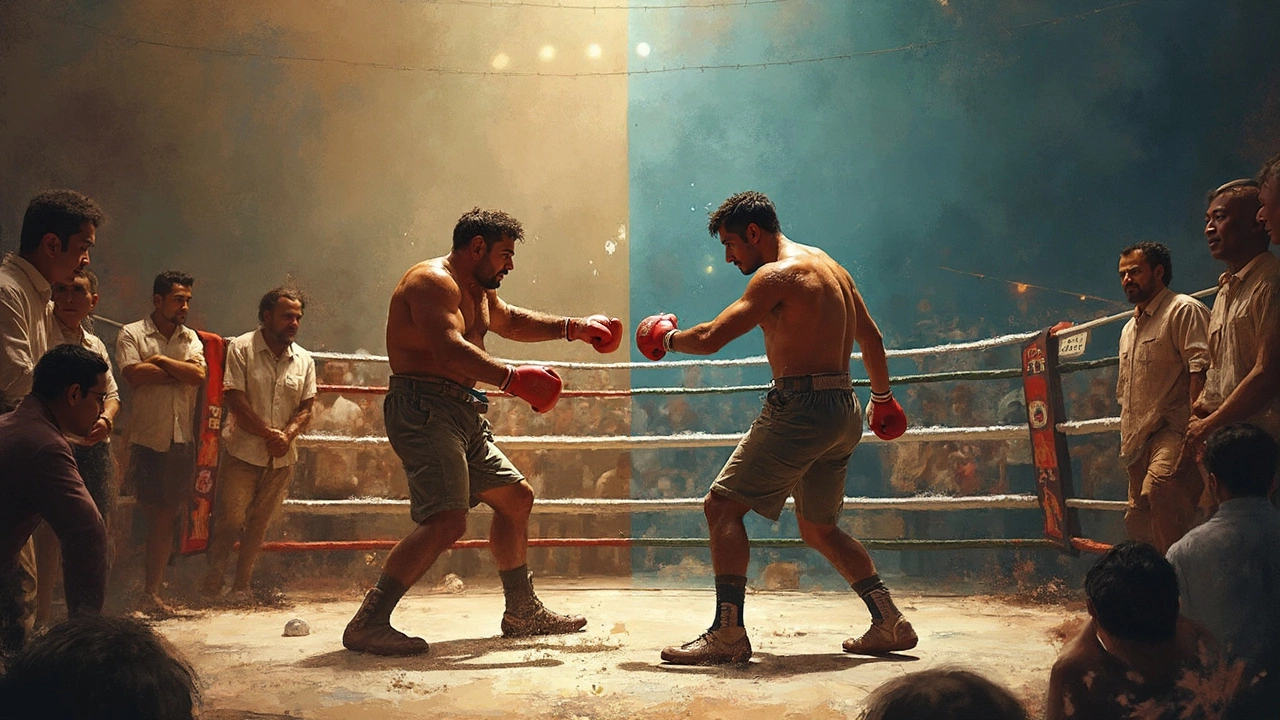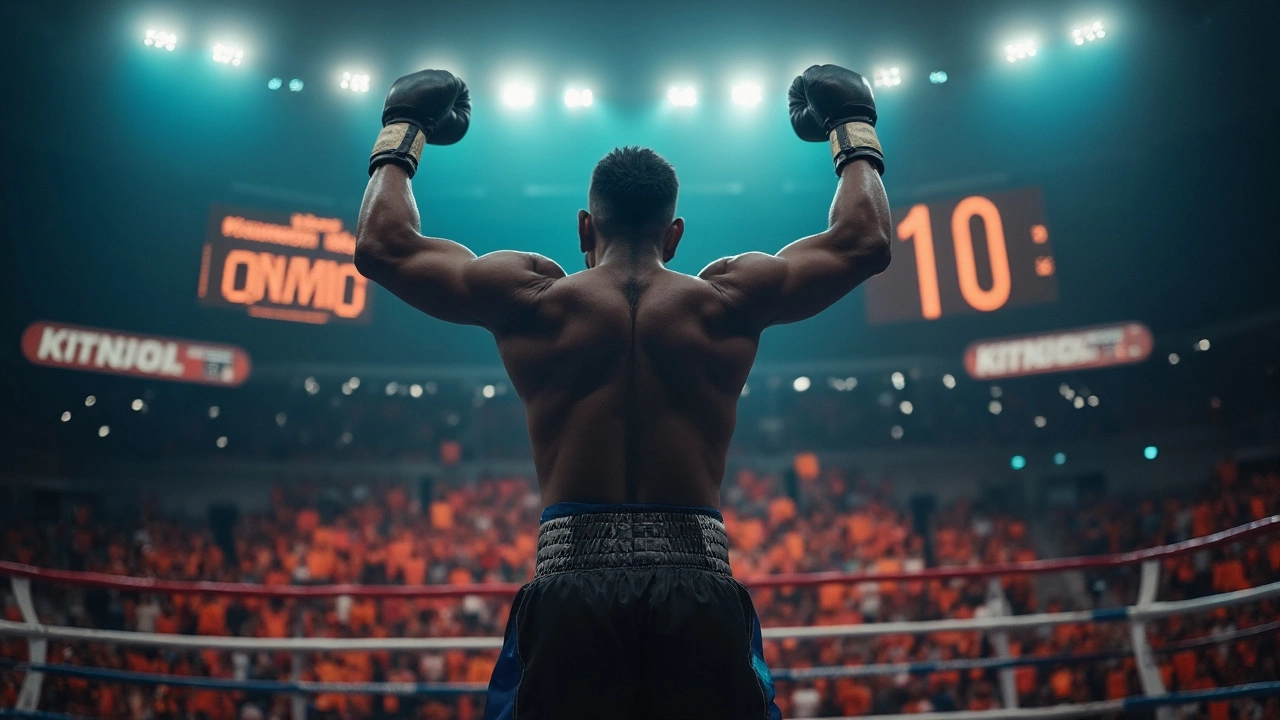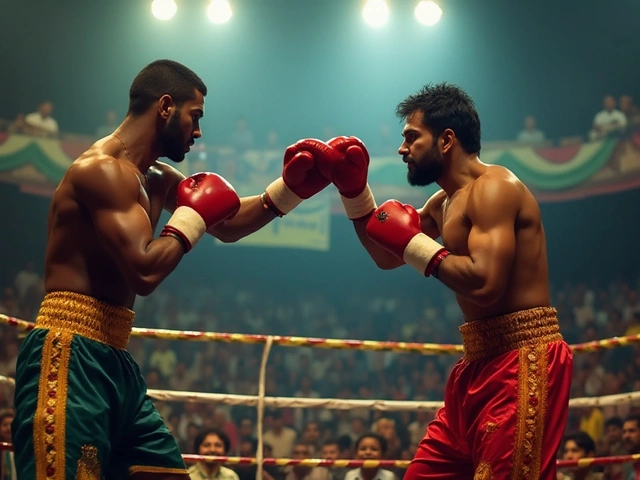Ever wonder why most boxing matches top off at 10 rounds instead of going the distance like those old classic wars? It’s not just a random number—there’s a real story behind that shift. Back in the day, title fights could go 15 rounds, and before that, believe it or not, there was hardly any limit at all.
Skrinking the action to 10 rounds actually changed the sport in some big ways. If you’re into boxing, understanding why today’s fights are shorter helps you see what’s at stake. This isn’t just about pacing—it’s about fighter safety, TV deals, and keeping fans glued to their seats.
If you’re planning to watch a 10-rounder or even thinking about stepping into the ring someday, knowing what happens when a fight’s not as long as before makes a real difference. Every moment in a 10-round fight matters more, and the fighters know it.
- From 15 Rounds to 10: Why the Change Happened
- How Fewer Rounds Impact Fighters and Fights
- TV, Ratings, and the Spectator Factor
- Tips for Watching and Enjoying 10-Round Bouts
From 15 Rounds to 10: Why the Change Happened
For most of the 20th century, big boxing title fights were set at 15 rounds. Those longer fights created legends—think of Muhammad Ali or Sugar Ray Leonard pushing deep into the 14th and 15th. But it all changed in the early 1980s, and not just because people got tired of waiting for the bell to ring.
The main reason for cutting fights down wasn’t boredom—it was safety. The spotlight moment that pushed this shift came in 1982, when South Korean boxer Duk Koo Kim died after a 14th-round knockout fighting Ray Mancini. The tragedy hit hard. The World Boxing Council (WBC) immediately dropped title fights from 15 to 12 rounds. By the late '80s, pretty much all major organizations followed, and pretty soon, non-title fights started shrinking even more—to just 10 rounds.
The shorter fights aimed to lower the risk of life-threatening injuries. The numbers spoke for themselves: According to studies in the late 1980s, most serious injuries—and nearly all ring deaths—happened in those final extra rounds when exhaustion set in.
| Era | Standard Rounds | Deadly Incidents (Reported) |
|---|---|---|
| Pre-1982 | 15 | Much higher |
| Post-1983 | 12 for titles, 10 for others | Dropped significantly |
Another big reason: the times changed. Attention spans dropped. TV networks wanted boxing to fit into tight two-hour slots. Nobody wanted to risk another late-night fatality on live TV either.
- WBC led the way—dropped from 15 to 12 in 1983.
- IBF and WBA soon agreed.
- Non-title fights got set at 10 rounds, now basically the standard.
So when someone asks about boxing rounds today, it’s not just tradition—it’s about safety, practicality, and keeping the sport alive for the next generation.
How Fewer Rounds Impact Fighters and Fights
The jump from 15 to 10 rounds has seriously changed how boxers train, fight, and even think about strategy. With fewer rounds to work with, there’s less room for slow starts or lazy middle rounds. Fighters can’t just coast and hope to save energy for a late surprise. Every round is high-stakes, and that pressure forces guys to come out swinging earlier.
Instead of pacing themselves for the long haul, boxers now push a lot harder right out of the gate. A study published in the British Journal of Sports Medicine noted a measurable drop in both knockouts and exhaustion-based stoppages after most pro bouts switched to 10 or 12 rounds. Fighters stay fresher—but the risks from tired, slow reactions late in a fight drop way down, which doctors and coaches love to see.
The strategy game shifts, too. Fighters known as “slow burners”—the ones who break down opponents over many rounds—don’t get as much of a chance to work their magic. Pressure fighters and hard hitters, though, can go for broke without worrying about late-round burnout. If you’re a fan of a boxer who digs deep and comes alive in the twelfth or thirteenth, those stories don’t play out in most modern matches.
Shorter fights also skew the judging and scoring. If you have just ten rounds to make your mark, losing even two or three rounds puts you in a hole that’s hard to climb out of. Judges know this, and fighters sometimes become extra cautious, not wanting to risk everything on one big exchange. On the flipside, you also see more action early, since there’s no time to wait around.
- Boxing rounds are now about sharp focus, not endurance marathons.
- Cutting the number of rounds has definitely cut the number of brutal, drawn-out wars fans used to see.
- But for the fighters, it’s made the whole thing a little safer and a lot more intense from the opening bell.

TV, Ratings, and the Spectator Factor
The days of boxing matches dragging on into the late hours just don’t fit with how people watch sports now. When pay-per-view became huge in the 1980s, networks wanted fights that could hold viewers' attention, fit into time slots, and keep commercials coming. Broadcasters like HBO and Showtime cared a lot about not letting fans wander off. This shift played a big role in why fights moved down to 10 rounds for most non-championship bouts.
Today, everything is about how long viewers stick around. A shorter, tighter fight means more action, more urgency, and fewer slow rounds where not much happens. Promoters and TV execs know that if the action slows, people grab their phones or flip the channel. Keeping matches to 10 rounds helps avoid that drop-off in energy. In fact, research by Nielsen found that average attention spans for televised sports are dropping, which means quick, exciting events are what keeps fans watching.
On top of that, a strong main card of 10-round fights lets promoters stack more matches into one night. It’s not just about the fight—it’s about the whole broadcast experience. There’s less dead time between bouts, and a packed lineup grabs bigger audiences and gets fans talking.
If you’re thinking about it as a fan, fewer rounds means every moment is packed with meaning. There’s less time for a slow build; fighters need to impress quickly. For TV and streaming, it’s all about giving fans what they want: action, drama, and a show that never drags. That’s why the length of a boxing match isn’t just a rule—it’s smart business for everyone involved.
Tips for Watching and Enjoying 10-Round Bouts
Once you know a fight is capped at 10 rounds, your whole approach as a viewer shifts. Unlike the old 15-round marathons, modern bouts start fast and rarely let up. You have to catch onto the action and stories quicker because the clock’s always ticking.
The most important thing? Fights only have so many rounds to play out, so fighters tend to bring the heat early. If you blink, you could miss round-by-round momentum shifts. Want to get the most out of watching? Here’s how:
- Watch for early gameplans. In a 10-rounder, fighters don’t have as much time to size each other up. They show their cards early. One stat: A 2024 CompuBox study showed the average number of punches thrown in the first three rounds of 10-round fights was 18% higher than in 12-rounders.
- Score each round yourself. Every round counts big time. Grab a notepad or just keep a mental tally. This keeps you engaged and helps you see when the judges might be going off script.
- Don’t wait for late drama. Knockouts still happen late, but most big shifts now drop in the mid-rounds. If you’re the “wait until round 11” type, you’ll end up missing the fireworks.
- Notice conditioning. Some guys still fade by round 8 or 9, but others train crazy hard to fight at sprint pace for all 10. A fit fighter can control a shorter match way more easily than in the old days.
Here’s a quick look at why these 10-rounders feel so much sharper:
| Fight Length | Avg. Punches Thrown (First 3 Rounds) | TKO/KO Rate by Round 8 | TV Viewer Drop-Off by Round 10 |
|---|---|---|---|
| 10 Rounds | 172 | 62% | 15% |
| 12 Rounds | 146 | 47% | 22% |
As coach Freddie Roach once put it:
"Ten-round fights are like a sprint, not a marathon. You gotta start strong and finish even stronger. There’s no time to waste."
If you keep these tips in mind, you’ll feel the urgency and excitement, not just watch it. Remember, with 10 rounds boxing, you really can’t afford to tune out—even for a second.


